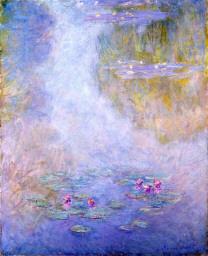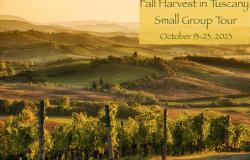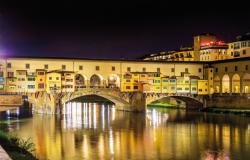An exhibition opening in Florence on Friday will help unlock the secrets of Impressionism, providing a step-by-step guide to how the movement's stars created some of their best-loved masterpieces.
The show will look at the revolutionary innovations introduced by artists such as Claude Monet, Pierre Auguste Renoir and Vincent Van Gogh.
Entitled Impressionismo: Dipingere la Luce (Impressionism: Painting The Light), it features around 60 important works, a number of which are rare loans from Cologne's Wallraf-Richartz Museum.
The exhibit will introduce visitors to the sophisticated diagnostic techniques used by art historians, which allow them to analyze the different marks left by paintbrush, pencils and spatulas.
Step by step, they uncover original sketches or earlier versions of the work, gradually creating an outline of how the painting was pieced together.
The exhibit therefore seeks to encourage visitors to look beyond the surface beauty of the painting and appreciate the thought and effort that went into creating it.
One of the clearest points to emerge from research in this field is the fact that, despite their spontaneous appearance, most Impressionist works were the result of painstaking preparation.
For example, infrared reflectography, which is used to study the layers under a final painting, has revealed a preparatory drawing and series of perspective lines beneath Vincent Van Gogh's Pont de Clichy.
Similar underlayers have been revealed in Paul Gauguin's Young Breton Woman and his unfinished Tahitian Women, as well as in Edouard Manet's Bunch Of Asparagus.
Meanwhile, analysing the paint content of various paintings has confirmed they really were produced outside, rather than merely sketched outdoors and later transposed in a studio.
For example, the paint in Armand Guillaumin's Low Tide At Saint-Palais contains grains of sand, while Gustave Caillebotte's Laundry Drying Along The Seine contains poplar pollen.
The show will also explain some of the practical developments that allowed Impressionists to escape the restrictions of studios and move outdoors, such as tubes of paint, new brushes, and artist's cases, which they used to carry their materials around.
One section of the exhibit looks at the unfinished appearance of many Impressionist works, which in addition to their rapid style, often lacked a final layer of varnish, as well as the artist's signature.
This practice, in sharp contrast with tradition, has created problems for critics and buyers but was typical of the Impressionists' determination to break with academic convention.
The exhibition runs in Palazzo Strozzi from July 11 until September 28.





